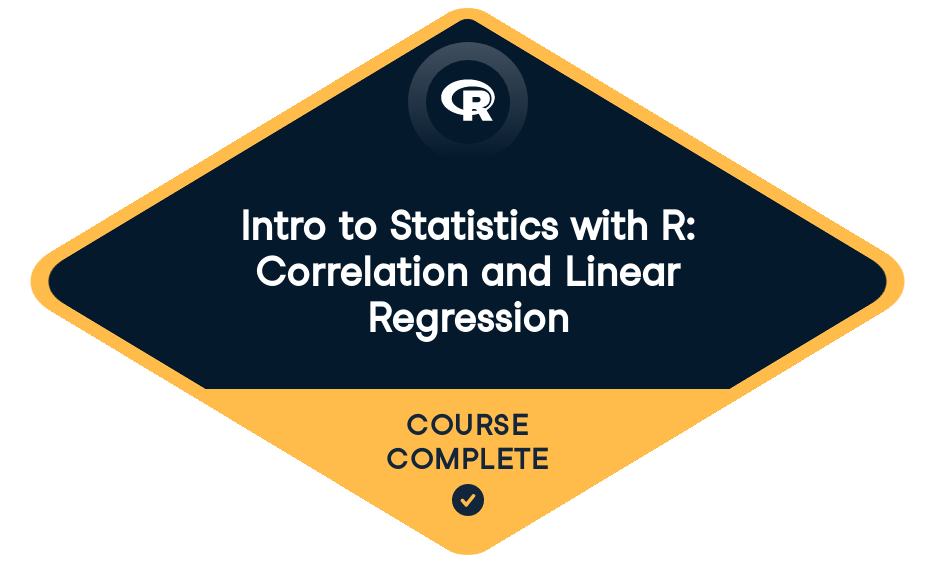Erika Schiffer has completed
Intro to Statistics with R: Correlation and Linear Regression
Start course For Free4 hr
2,350 XP

Loved by learners at thousands of companies
Course Description
If you have ever taken a math or statistics class, you’ve probably heard the old adage "Correlation does not imply causation". The first part of this course explores this further, and will offer a broad overview on correlational analysis. In the second part you will leave descriptive statistics behind, and dive into regression, prediction and inferential statistics.
Training 2 or more people?
Get your team access to the full DataCamp platform, including all the features.- 1
An introduction to Correlation Coefficients
FreeIn the first chapter you will be given a broad overview on the concepts behind correlation as well as some examples. Furthermore, you will walk through the mathematical calculation of the correlation coefficient r, that is the Pearson product-moment correlation coefficient. Finally, there will be a part on the assumptions underlying a typical correlational analysis.
How are correlation coefficients calculated?50 xpManual computation of correlation coefficients (1)100 xpManual computation of correlation coefficients (2)100 xpManual computation of correlation coefficients (3)100 xpThe usefulness of correlation coefficients50 xpCreating scatterplots100 xpCorrelation matrix100 xpAnalysis scatterplots50 xpGet intuitive! #150 xpPoints of caution50 xpNon-representative data samples100 xpGet intuitive! #250 xp - 2
An introduction to Linear Regression
FreeIn this first chapter on linear regression, professor Conway will give you an overview on regression; What does it do? What is it used for? You will see how to build and execute a regression model in R, and what the effect is of adding additional regressors.
Introduction to regression50 xpImpact experiment100 xpRegression equations and the R-squared value50 xpManual computation of a simple linear regression100 xpExecuting a simple linear regression using R100 xpCoefficient of impulse control50 xpCorrelation coefficient50 xpMultiple linear regression50 xpExecuting a multiple regression in R100 xpEffect of adding an extra regressor50 xp - 3
Linear Regression Models continued
FreeIn chapter three you will do the calculation of the regression coefficients yourself in R. Next, there will be a detailed study of the assumptions underlying a linear regression analysis. The end is reserved for Anscombe’s quartet, a famous statistical example that shows you the importance of graphing data before analyzing it.
Estimation of coefficients50 xpCalculating the sum of squared residuals100 xpWhich model?50 xpEstimation of unstandardized and standardized regression coefficients50 xpRegression coefficient50 xpStandardized linear regression100 xpAssumptions of linear regression50 xpAssumptions?50 xpDistribution of Y50 xpAnscombe's quartet50 xpPlotting residuals100 xpAssumption of homoscedasticity?50 xp
Training 2 or more people?
Get your team access to the full DataCamp platform, including all the features.Join over 17 million learners and start Intro to Statistics with R: Correlation and Linear Regression today!
Create Your Free Account
or
By continuing, you accept our Terms of Use, our Privacy Policy and that your data is stored in the USA.